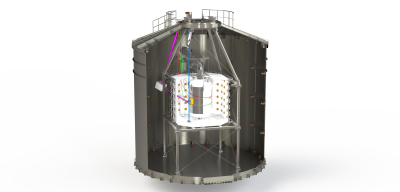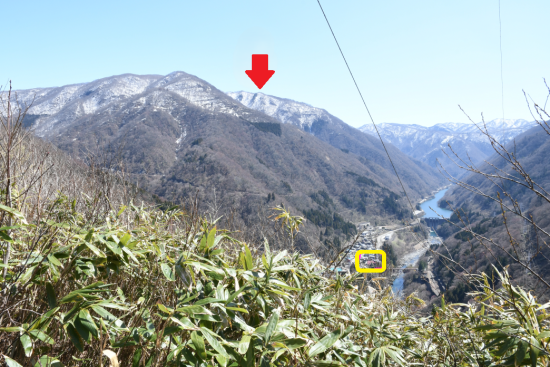32% of the energy content of the Universe is matter, stuff that both feels and exerts the gravitational force. But the matter that we understand, the matter that we and all planets, stars, and galaxies in this Universe are made of, amounts to only about 16% of all of the matter that gravitates in the universe. The other 84% of all that gravitating matter in the Universe is what we call Dark Matter. We can see its various effects (see Kavli IPMU’s other Research Programs), but not Dark Matter itself. Dark Matter direct detection experiments set out to change that.
In 2018 Kavli IPMU was one of 4 Japanese institutes that joined the XENON collaboration to help build the XENONnT experiment in Italy at the Laboratori Nazionali del Gran Sasso. Our main Japanese contributions improved liquid phase xenon purification, allowed drifting electron’s lifetime monitoring, and building a neutron veto that does not use flammable liquid scintillator. Our Kavli IPMU team was introducing the new neutron veto technology which we got from Super-Kamiokande with the help of our friends at the Kamioka Observatory, and introduced the low-radon emission getter pills used during science runs in the detector’s new liquid-phase xenon purification system.
XENONnT started taking science data on July 6, 2021. In the spring of 2025 the detector was shut down to install a new cathode to achieve the design drift field strength in the detector’s time projection chamber – an operation that was successfully completed, and will allow us to resume science data taking soon. The latest of the data taken before this interruption are still being analyzed. While earlier data did not find any traces of Dark Matter interactions in our detector, there nonetheless was significant science output beyond the limits we set on Dark Matter interactions – most notable among them perhaps and celebrated in the Physical Review Letters collection of the year 2024 was our paper announcing the “First Indication of Solar 8B Neutrinos via Coherent Elastic Neutrino-Nucleus Scattering with XENONnT”.
All Kavli IPMU liquid xenon related efforts are based at our Kamioka Branch, where they started with the XMASS-1 experiment as – back then not yet “Kavli” – IPMU started in 2007. Looking into the future we are founding members of the XLZD collaboration, continuing to use our facilities under- and above-ground here at Kamioka for detector development efforts towards this next generation liquid xenon time projection chamber our grand and enthusiastic coalition of currently still competing Dark Matter hunters from XENON, LUX-ZEPLIN and DARWIN hopes to start building in the near future – a Whitepaper describing its science scope is published, reaching well beyond the direct detection of Dark Matter particles.
Figures/Pictures:
- Schematic of the XENONnT detector systems: Dark gray is its 700 tonne water shield and muon veto, white its neutron veto, at the center of which – also clad in reflective white and here partially bared to make it more visible – the cryostat containing the liquid xenon time projection chamber is visible.

- A view onto the Kamioka Observatory offices in their village. The farther of the two snowy mountains on the left side of the picture is Super-Kamiokande’s and XMASS’s shield against cosmic rays.

(Last update: 2025/09/29)
Links
Members
- Shin'ichiro Ando
- Patrick De Perio
- Nivedita Ghosh
- Elisa Gouvea Mauricio Ferreira
- Johannes Herms
- Katsuki Hiraide
- Shunsaku Horiuchi
- Yasuhiro Kishimoto
- Ryuichiro Kitano
- Chervin Laporte
- Kai Martens
- Thomas (Tom) Melia
- Yuta Michimura
- Shigetaka Moriyama
- Hitoshi Murayama
- Masayuki Nakahata
- Ippei Obata
- Sebastien Peirani
- Hiroyuki Sekiya
- Jie Sheng
- Yevgeny Stadnik
- Yasuhiro Takemoto
- Volodymyr Takhistov
- Takafumi Tsukui
- Masaki Yamashita
- Hiroki Yoneda
- Tianyu Zhu






